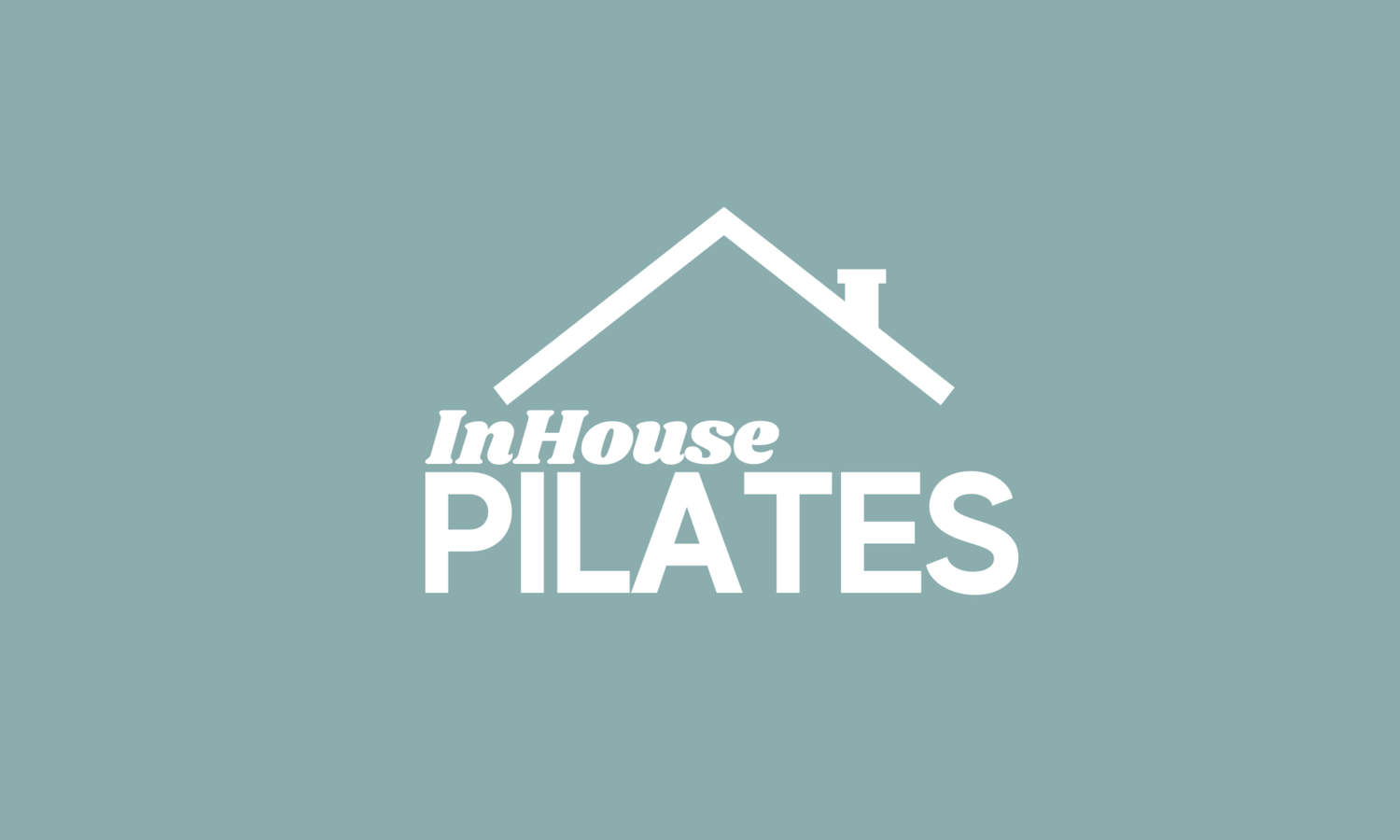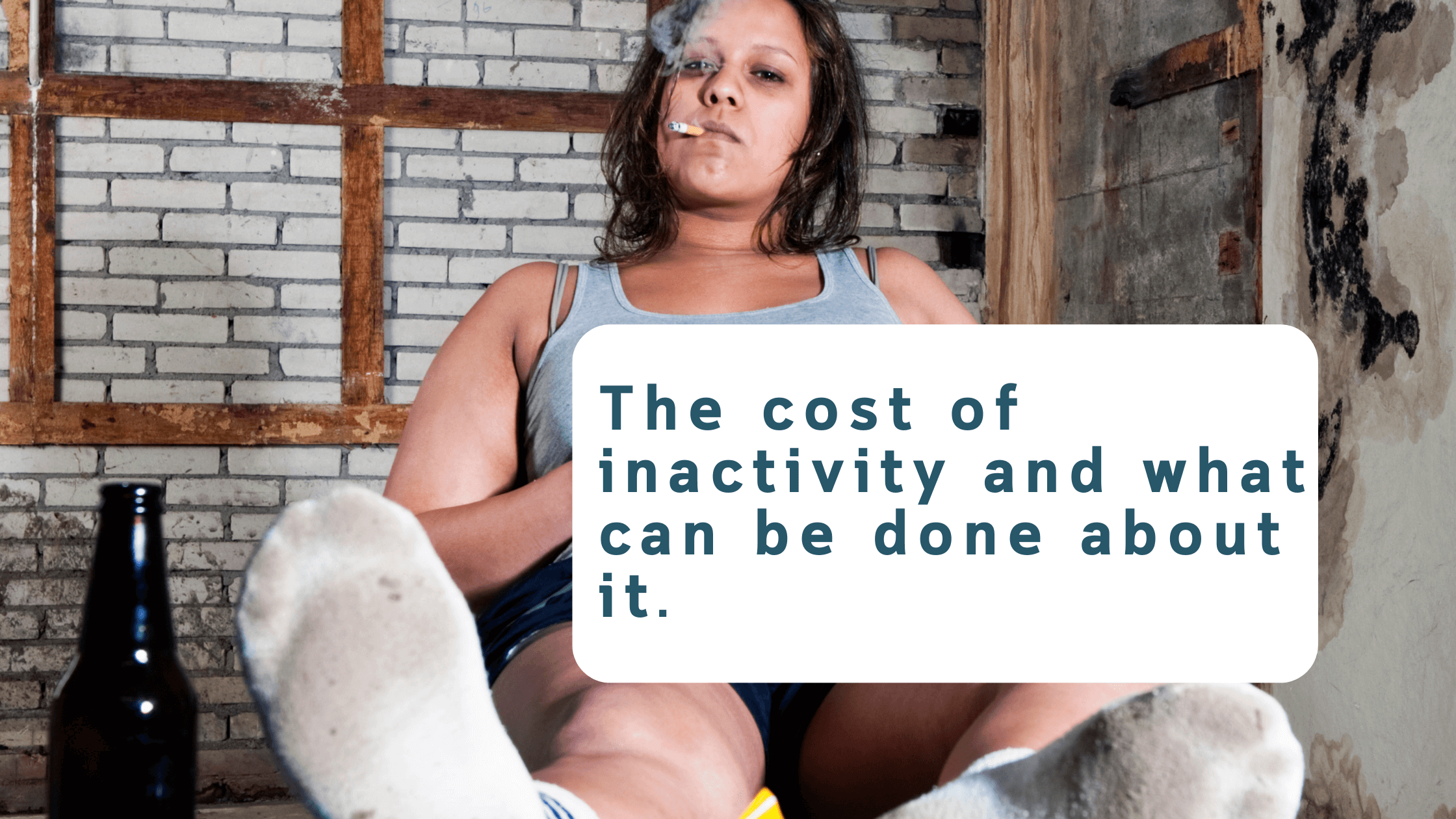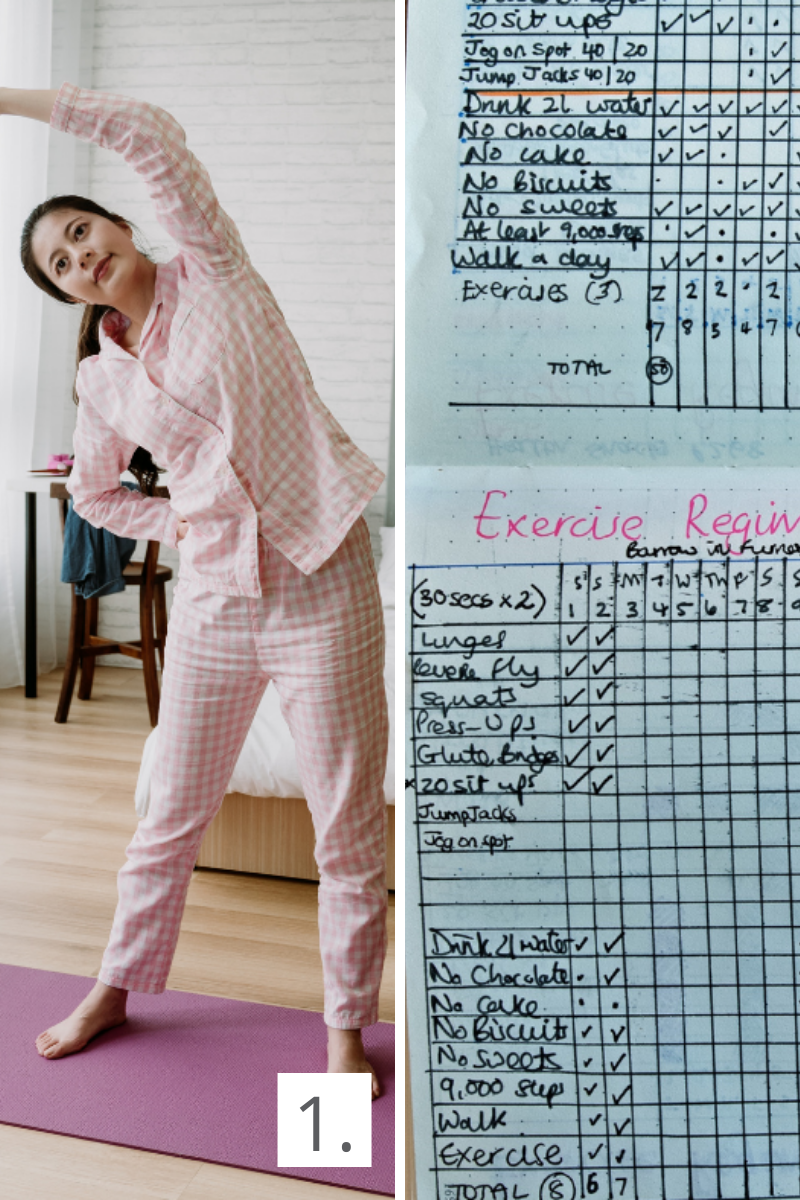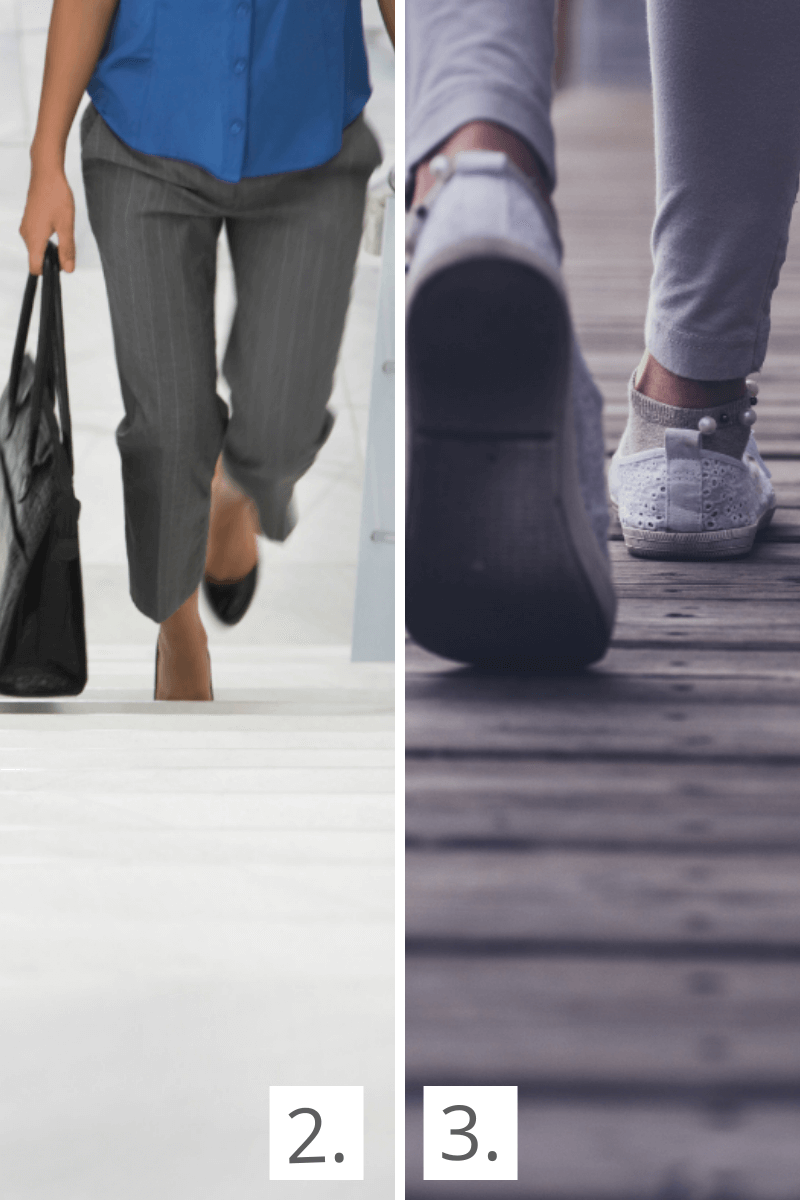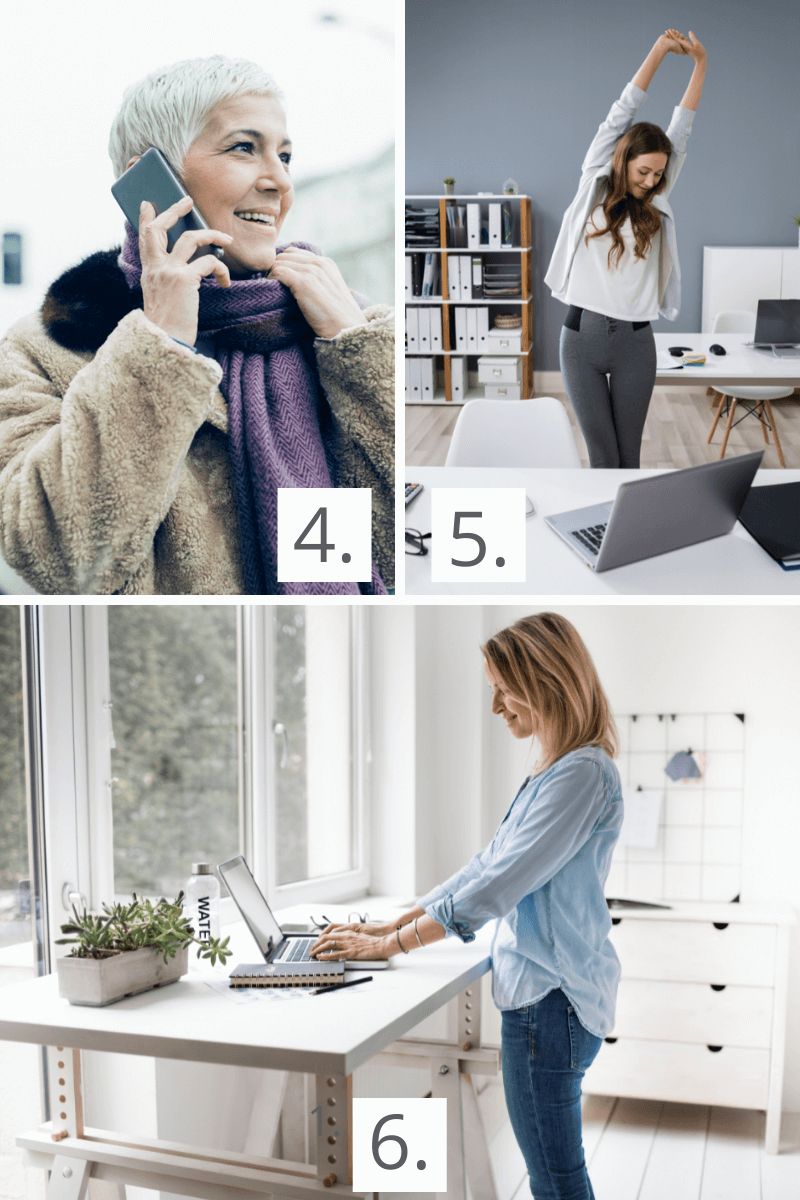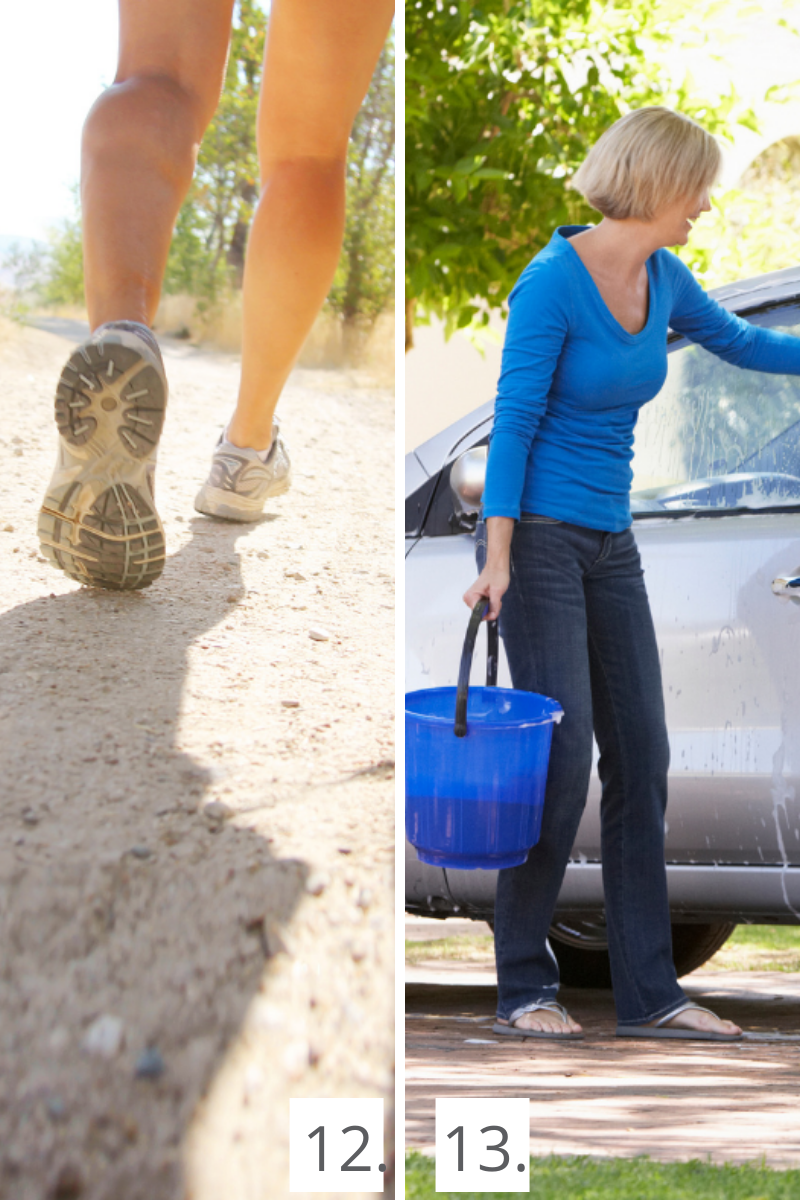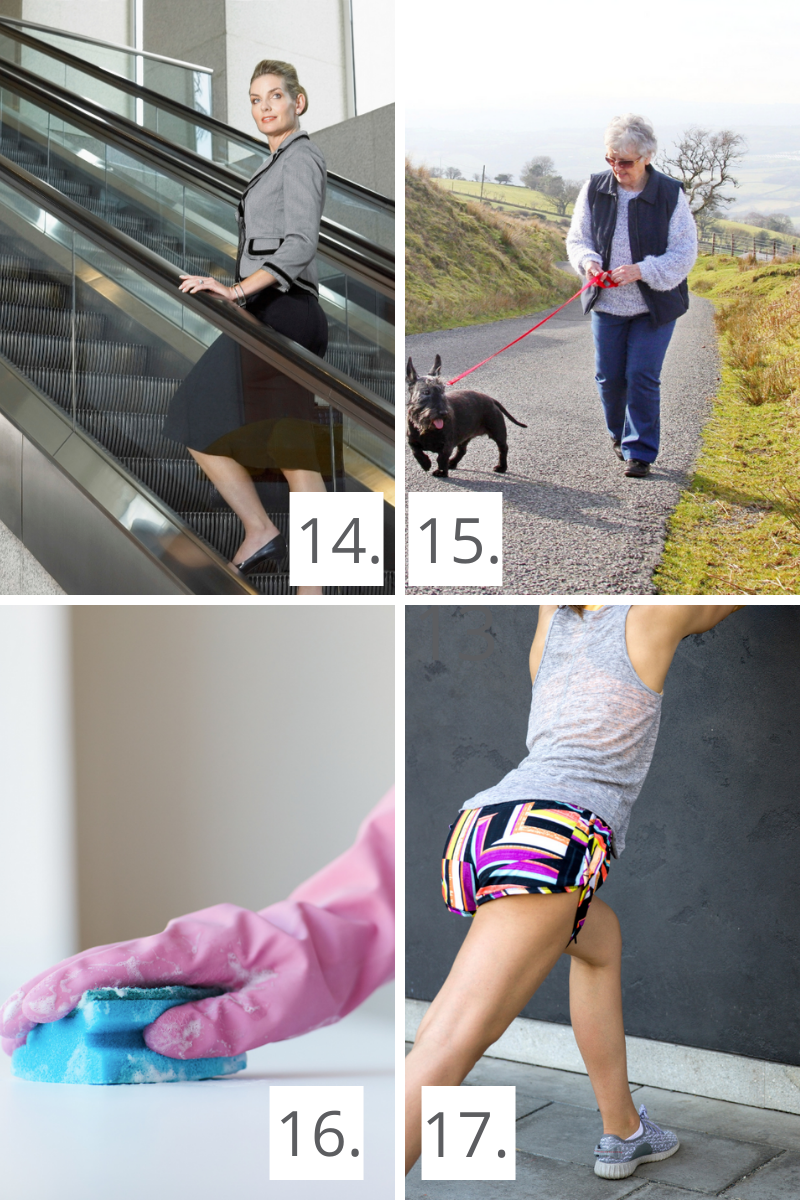The cost of inactivity and what can be done about it.
Medibank states ‘The cost of physical inactivity to the Australian economy is estimated to be $13.8 billion. It is estimated that 16,178 Australians die prematurely each year due to physical inactivity. Productivity loss due to physical inactivity equates to 1.8 working days per worker per year.’
According to the Australian Institute of Health and Welfare web report, ‘Low levels of physical activity are a major risk factor for chronic conditions. People who do not do sufficient physical activity have a greater risk of cardiovascular disease, type 2 diabetes, and osteoporosis.
Being physically active improves mental and musculoskeletal health and reduces other risk factors such as overweight and obesity, high blood pressure, and high blood cholesterol.
Physical activity can also be helpful in the management and treatment of many chronic conditions—by improving symptoms, and/or delaying or halting progression of the condition or the onset of associated diseases and complications (Pedersen & Saltin 2015).’
But how much exercise is enough?
Australia’s Physical Activity and Sedentary Behaviour Guidelines outlines the minimum amount of physical activity required for health benefits for adults between 18-64:
Accumulate 150 to 300 minutes (2.5 to 5 hours) (43 minutes daily) of moderate-intensity physical activity or 75 to 150 minutes (1.25 to 2.5 hours) (21 minutes daily) of vigorous-intensity physical activity or an equivalent combination of both moderate and vigorous activities, each week
Do muscle-strengthening activities on at least 2 days each week. Strength training including pushups, triceps dips, squats, and lunges. Strength exercise also includes carrying groceries or small children.
For adults aged 65 and over, the Guidelines recommend that older people accumulate at least 30 minutes of moderate-intensity physical activity on most, preferably all, days. Like brisk walking, swimming, water aerobics, cycling, gardening, tennis, and housework like vacuuming and mopping.
But what if you have no time during the day to exercise, then build activity into your day, by making small changes to your daily routine. These small changes can have a big impact.
‘For decades, researchers assumed you needed to break a sweat—or at least raise your heart rate for a prolonged period—for an activity to count toward exercise guidelines. But new research is causing scientists to rethink those beliefs. One study, for example, found that short bouts of higher-intensity exercise were associated with a decreased risk of being overweight or obese.’
‘While traditional aerobic activity and strength training are key to maintaining a healthy lifestyle, everyday activities can be a great way to get moving.’
Simple ways of building more movement into your daily life: -
01 - Wake up and work out
Have your workout clothes (or workout in your pj’s) ready and set up your workout space the night before will encourage you to workout first thing in the morning.
Have a weekly plan of your workout.
There is nothing worse than not knowing what you’re going to do for a workout when you only have 20 minutes to do it.
This leads to endless waste of time scrolling through social media for ideas. Think a quick walk, pushups, or jumping jacks, dips, or stretches. Regardless of what it is, have a plan.
A study concluded that ‘for weight gain prevention, accumulated higher-intensity PA bouts of <10 minutes are highly beneficial.’
02 - Use stairs instead of the lift.
By continuously taking the stairs you can gauge how your fitness improves over time when you reach the top of the staircase without being out of breath.
Just a note on taking stairs:
When stepping onto the stairs, place your entire foot on the step, not just the ball of the foot, and push off the heel as you step up. This will help prevent injuring your knees, hips, and back.
Ensure that your knee, shin, and second toe are tracking, this will help prevent knee injuries.
Activate and use your lower abs to step.
03 - Park further away from shops and walk.
04 - Have walking meetings or during your lunch break, walk around the block.
Whether you are working from an office or home, stand up every hour from your computer and walk a lap around your office, house or garden, to reduce the negative effects of sitting for long periods.
If working in an office, take your calls outdoors while you walk, if you can.
If you work from home, do the same or make family and friends’ calls while you are out for a walk.
05 - Stand up every hour
Whether you work from home or work, have a rolling alarm to remind you to stand up every hour from your computer and walk a lap around your office, house, or garden, or do 5-10 squats or push-ups against your chair, seated leg raises, or stretches every hour to reduce the negative effects of sitting for long periods.
Being sedentary affects your body negatively:
Sitting weakens your legs and glutes,
Decreases the efficiency of our digestion.
Sitting for long periods of time with bad posture causes back, neck, and shoulder issues and shortens hip flexors.
‘Emerging studies suggest sitting increases your chances of developing some types of cancer including lung, uterine, and colon cancers. The reason behind this is not yet known.
‘Sitting for long periods has been linked to heart disease. Some experts say that people who are inactive and sit for long periods have a 147 percent higher risk of suffering a heart attack or stroke.’
‘Research suggests that people who spend more time sitting have a 112 percent higher risk of diabetes.’
‘Sitting for long periods can lead to varicose veins or spider veins (a smaller version of varicose veins). This is because sitting causes blood to pool in your legs.’
If you work 8 hours a day, you can get through each muscle group every hour of your day e.g. quads, hamstrings, glutes, and calves: lunges or squats, hamstrings: hamstring curls, adductors (inner thighs): seated or standing ball squeezes, abductors (outer thighs) standing side raises, calves: standing calf raises. There you have, 5 simple exercises, 6 exercises.
06 - Use a standing desk where possible.
Think about your posture as you stand: Shoulders down, chest lifted, abs in and up. Or combine some sitting and some standing during the day.
07 - Stretch tight muscles during the day.
Roll your shoulders, stretch your tight neck muscles (here are 6 neck stretches you can do at your desk) or stretch you back. (no images shown.)
08 - Join a lunchtime exercise class.
Many gyms provide 45-minute workouts during lunchtime. Pack your gym bag and have it ready daily.
09 - Avoid eating at your desk.
Rather take your food outdoors (weather permitting) the sunshine and outdoors will do wonders for you. Time allowing, go for a quick walk around the block before heading inside.
10 - Stand during meetings (no image).
If sitting for long periods results in a sore back, ask your colleagues if they mind you standing during part of the meeting.
11 - Wear a pedometer.
Studies have shown that wearing a self-monitoring from wearable technology with real-life feedback may be particularly useful to enhance lifestyle changes that promote weight loss in sedentary overweight or obese adults.
‘Seeing the number of steps you take to get higher and higher throughout the day is fun and it is always a great feeling to see that you’ve met your step goal.’ Start off with a number e.g. 4000 steps a day and weekly increase the steps by 1000. Over a period you will reach 10 000 steps comfortably. ‘It is estimated that ‘at least 15 000 steps/week in moderate to vigorous physical activity e.g. 3000 daily steps in moderate-to-vigorous physical activity most days of the week.’
Studies have shown that people who walk anywhere between 7 500 to 10 000 steps per day can improve blood sugar levels, lower blood pressure, and help improve symptoms of depression and anxiety.
‘Most pedometers provide guidelines as per the 10,000-step protocol. You can, however, tweak your routine to clock 7,500 steps daily. Pedometers classify activity as follows:
Sedentary: Less than 5,000 steps daily
Low active: About 5,000 to 7,499 steps daily
Somewhat active: About 7,500 to 9,999 steps daily
Active: More than 10,000 steps daily’
12 - Take a walk after dinner.
This will improve digestion and blood sugar levels.
13 - Wash your car.
Washing a car uses a lot of energy to do so.
14 - If using the escalator, walk instead of standing still.
15 - If you have a dog, take it for its daily walk.
16 - Do your own housework.
If working from home, including house chores during a break i.e. vacuum one room or mop the floor.
17 - Get up during tv commercials.
Wash dishes, fold laundry, sweep the floor, put a load of washing on, do some stretches, do a muscle group like squats and lunges. If you’re watching Netflix, stand up and move in between series.
References:
https://www.unh.edu/healthyunh/blog/physical-activity/2017/09/5-ways-add-physical-activity-your-day
https://www.medibank.com.au/client/documents/pdfs/the_cost_of_physical_inactivity_08.pdf
Moderate to vigorous physical activity and weight outcomes: does every minute count?
https://www.pubmed.ncbi.nlm.nih.gov/21798015/#&gid=article-figures&pid=figure-1-uid-0
https://www.medicinenet.com/pedometers/article.htm
https://www.pubmed.ncbi.nlm.nih.gov/23458375/
https://www.pubmed.ncbi.nlm.nih.gov/21592351/
https://www.betterhealth.vic.gov.au/health/healthyliving/the-dangers-of-sitting
